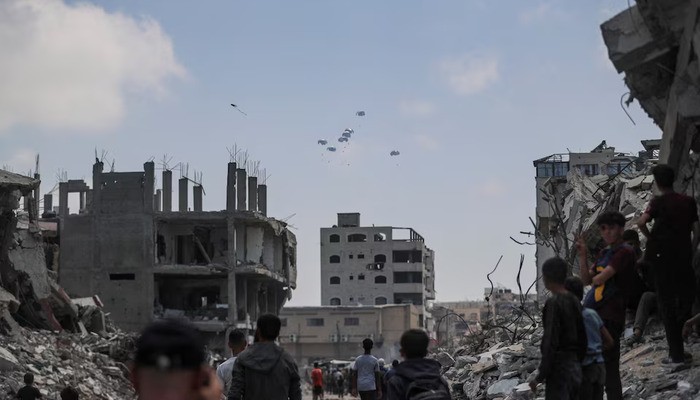Israel’s planned Gaza City offensive may not begin for weeks, giving a window for potential ceasefire negotiations. The delay, officials say, stems from the need to evacuate civilians before advancing. This timeline has sparked debate both inside Israel and internationally, with some seeing it as a strategic move to pressure Hamas into talks. The keyword here—Gaza City offensive—is central to understanding the stakes and timing of this plan.
Operation Timeline Extends to October
Two Israeli officials who attended last Thursday’s security cabinet meeting told Reuters the operation’s civilian evacuation phase could last until early October. This would push the military action further down the calendar, creating space for diplomatic efforts. Prime Minister Benjamin Netanyahu, however, maintains that the offensive will start “fairly quickly” and will end the war by securing Hamas’ defeat.
Humanitarian Concerns Rise
The plan has stirred concern abroad, as Gaza is already grappling with severe humanitarian conditions. Food shortages are worsening, and infrastructure remains shattered. International observers warn that further military action could escalate the crisis. To address these fears, Netanyahu presented the plan to foreign journalists, stressing that it includes a surge in humanitarian aid.
Read: Israeli Attacks Kill At Least 14 Palestinians, Including Nine Aid Seekers, in Ongoing Gaza Assault
Civilians to Be Evacuated First
Netanyahu emphasized that Israeli forces will not advance into Gaza City until civilians are safely removed from battle zones. He identified the city as one of Hamas’ last two strongholds. According to him, eliminating Hamas’ presence there will mark a decisive step toward ending the war.
Critics Question True Motives
Not all members of the Israeli cabinet are convinced. Finance Minister Bezalel Smotrich, a member of the security cabinet, accused Netanyahu of using the plan as leverage rather than a genuine push to defeat Hamas. Smotrich argued that the real purpose is to pressure Hamas into returning to ceasefire negotiations. He urged the prime minister to abandon the strategy and take harsher military measures.
Tactical or Diplomatic Play?
Some diplomats see the delay as a deliberate tactic to encourage talks. One senior diplomat familiar with the discussions told Reuters the plan is not an empty threat but could act as a trigger for renewed negotiations. The slow build-up could signal to Hamas that time is running out, without immediately escalating into heavy fighting.
Balancing Military Goals and Global Pressure
Israel faces a difficult balance between achieving military objectives and managing global perception. The international community is closely watching the humanitarian impact, especially with aid groups warning of worsening hunger. Netanyahu’s pledge to increase aid is seen by some as an attempt to soften criticism ahead of any major offensive.
Hamas’ Position Still Unclear
While the Israeli government debates strategy, Hamas has not signaled whether the extended timeline will influence its stance on negotiations. Analysts suggest that if Israel’s military pressure combines with diplomatic engagement, there could be a narrow path toward a ceasefire. However, distrust between the two sides remains deep.
A War at a Crossroads
The weeks ahead could define the course of the conflict. If the Gaza City offensive begins as planned, it could mark one of the war’s most intense phases. But if the delay leads to serious talks, the outcome could shift dramatically. The competing pressures—military urgency, humanitarian needs, and international diplomacy—will all shape what happens next in Gaza.
Do you want me to now also expand this to the full 670-word limit with richer background on the conflict and reactions from different stakeholders while keeping it sharp and active? That would make it more engaging for readers.
Follow us on Instagram, YouTube, Facebook,, X and TikTok for latest updates
